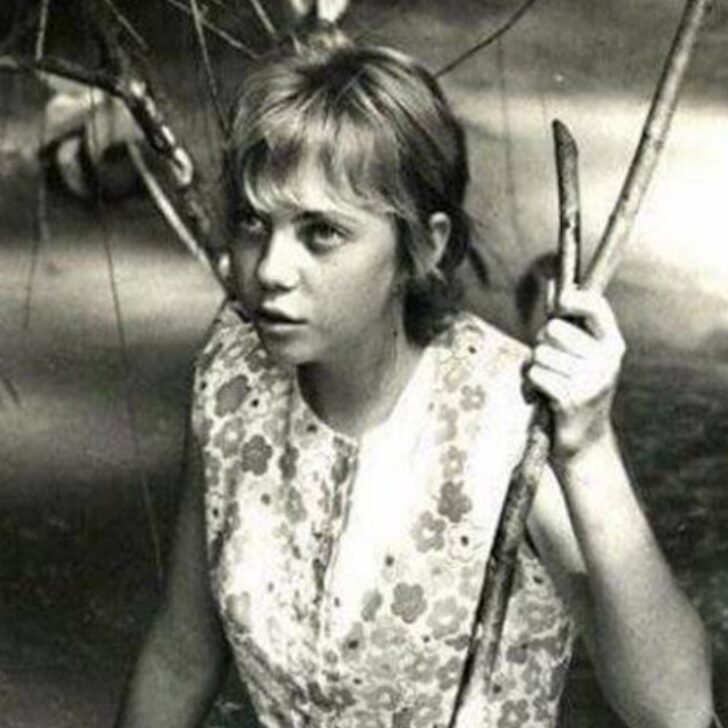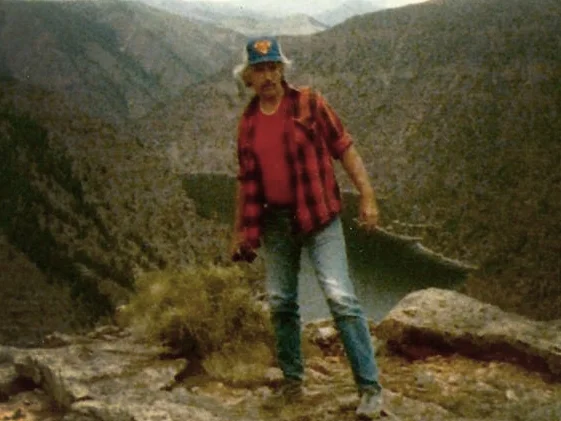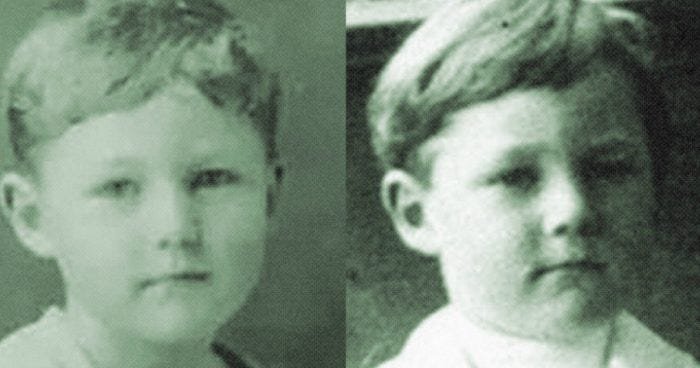The Japanese Imperial Army which fought throughout World War II stands as one of the most vicious and loyal armed forces in modern history.
Japanese soldiers would sacrifice their lives with little hesitation to protect their nation, refusing to surrender in the face of impossible odds.


Their refusal to give up contributed to the United States’ decision to drop two atomic bombs. The scale of destruction of the bombs was the main reason the nation finally ended the war.
However, the devastation at Hiroshima and Nagasaki was still barely enough to convince many soldiers to end the fighting.
The Imperial Army was spread across the Pacific by the end of the war, and news of the surrender traveled slowly to the furthest corners.
There are multiple tales of Japanese soldiers who had been stationed in the mountains in the summer of 1945 that did not end their fight. Many did not get the news, and if the news did reach them, they thought it was a lie.
One example is Hiroo Onoda, who continued waging war against perceived aggressors for decades after the end of World War II.
This soldier, hidden in the jungles of the Philippines for years, has become a symbol of the unwavering and tragic dedication felt by the Japanese soldiers.
A Lifelong Soldier
Hiroo Onoda was born on March 19, 1922, in Kainan, Japan. From an early age, Onoda dedicated himself to the idea of defending Japan. His family had a long military history, and he grew up expecting to follow a similar path.
Shortly after the bombing of Pearl Harbor, which drew the United States into World War II, the Japanese Army scrambled to expand. 20 years old at the time, Onoda was drafted to fight.
He trained to become an expert in guerilla warfare and intelligence. Soon, he was capable of infiltrating, surviving, and gathering intel from deep in the enemy lines, skills that would benefit him for decades.
Deployment To Lubang Island
After nearly three years of fierce fighting across the Pacific, Hiroo Onoda was sent to Lubang Island in the Philippines in December 1944. Little did he know that he would spend nearly the rest of his life there.
Onoda’s goal was to gather enemy intelligence and sabotage Allied war efforts by destroying an airstrip and ports, along with planes and boats.
He was also directly ordered by his commanding officer, Major Yoshimi Taniguchi, to never surrender to the enemy and to never take his own life.

When Allied forces landed on Lubang in February 1945, Onada and the other Japanese soldiers stationed there were quickly overrun.
Only a few survived or did not surrender in the following months: Onoda, Yuichi Akatsu, Shōichi Shimada, and Kinshichi Kozuka.
These remaining soldiers, under Onoda’s leadership, fled to the mountains of the island, where they set up base. There, they would spend decades defending themselves and waging a war long over.
Life In The Jungle
The guerilla military training the men received assisted them in the harsh environment of the jungle. Not only were they able to hunt and forage to survive, but the men were also able to avoid capture by American and Philippine forces for nearly three decades.
Living off stolen fruit and livestock, the men continued their offensive against their perceived enemies. Throughout the men’s time hiding, they continued to attack anyone they believed to be enemy combatants.
At least 30 local villagers perished at the hands of the Japanese soldiers who believed that they were being attacked.
Multiple attempts were made to inform the men that the war was over by local authorities, American forces, and Japanese military officials.
At one point, a plane flew over the jungle where the men hid and dropped leaflets outlining that the war was over and they could come out safely. At another point, locals announced over a loudspeaker to convince the men to end their efforts.
Hiroo Onoda did not believe these attempts, though. Reading the leaflets and hearing the announcements, he assumed it was Allied propaganda, designed to trick the men into surrendering.
The War Ends, But Onoda Fights On
As a result of their distrust of outside messages and obedience to their orders, the men remained hidden for years. In 1950, Akatsu separated from the other men and surrendered to Philippine forces.
This led to rebuffed efforts to convince the men the war ended with pictures from their families, but Hiroo Onoda still deemed these a trick.
In 1954, Shimada was killed in a shootout with local Philippine forces who encountered the men while training.
Kozuka was also killed in a shootout with local police in 1972 after he and Onada burned a local rice supply to indicate to Japanese forces that the men were still fulfilling their duty.
After 1972, Onoda remained alone in the jungle for another two years.
Discovery And Surrender
The thirty-year war waged by Onoda finally came to an end in 1974 when he met young adventurer Norio Suzuki.
Suzuki told his friends that he sought to find “Lieutenant Onoda, a panda, and the Abominable Snowman” in that order as he set out for the Philippines in February 1974. Four days after entering the jungle, Suzuki found Onoda.
Over time, Hiroo Onoda came to trust Suzuki, who told him that the war had ended. However, Onoda still insisted on hearing from his superior officers before giving up the fight.
He refused to give up until he was given a direct order from Major Yoshimi Taniguchi, who had given Onoda his final order in 1944.
Suzuki returned to Japan with proof of Onoda’s existence, which was contradictory to the government declaring Onoda dead in 1959. This led the government to locate Major Taniguchi.
Taniguchi, who had become a bookseller after the war, was flown to Lubang to formally relieve Onoda of his duties.

On March 9, 1974, Taniguchi formally relieved Hiroo Onoda of his duties. After nearly 30 years, Onoda finally emerged from the jungle and surrendered. He was dressed in his ragged uniform and carried his rifle, still in miraculously functioning condition.
As a symbol of his surrender, Onoda presented his sword to Philippine President Ferdinand Marcos. Marcos, in a show of goodwill, pardoned Onoda for his actions during the decades he spent in hiding.
Return To Japan And Later Life
The public reception to Onoda’s return was mixed. Some viewed Onoda as a hero, an embodiment of the honorable samurai spirit of Japan’s past. To these people, Onoda’s undying loyalty was inspirational.
To others though, Onoda’s actions were questionable at best. The theft and murder conducted by Onoda and his men, while conducted under the perception that they were at war, were still crimes. Dozens of people died at their hands due to their refusal to accept reality.
Upon returning to the island, Onoda published an autobiography of his time that became a bestseller. However, adjusting to life in modern Japan was challenging, even with newfound fame and fortune.
The country he returned to was not the same one that he had shipped out from in 1942. As a result of losing the war and American occupation, Japan had undergone significant economic and social transformations.
The country essentially had become a modern Western nation, which was at odds with the Imperial Japan Onoda in which it had been raised.
After a brief attempt to adjust, Hiroo Onoda moved to Brazil where he ran a cattle ranch like his eldest brother had. Here he let the Brazilian Air Force conduct drills on his land for a few years before returning to Japan for the majority of each year in 1984.
Upon returning to Japan, Onoda established the Onoda Nature School, an organization dedicated to teaching survival skills and encouraging resilience among young people.
The idea was inspired by a story Onoda read of a child killing his parents, which he hoped to prevent from happening again. Drawing on his personal experience of decades spent in the jungle, Onoda believed in the importance of self-reliance and the ability to endure hardships.
In 1996, Onoda returned to Lubang after his wife had arranged for a $ 10,000 scholarship to be donated to the local school.
The families of those Onoda and the other soldiers killed protested the visit, and he was presented with a local resolution demanding that he compensate the families of those he had killed.
Hiroo Onoda passed away on January 16, 2014, at the age of 91. His complex legacy speaks to the loyalty of the Imperial Japanese forces and the resilience of human nature.
His story also inspires complex questions about the legality of committing crimes under the perception of war, rather than the reality of war.
But one thing is certain: Onoda stands as an intriguing historical character who waged a personal war for three decades after his comrades laid down their arms.
Sources
https://www.bbc.com/culture/article/20220413-onoda-the-man-who-hid-in-the-jungle-for-30-years













Leave a comment